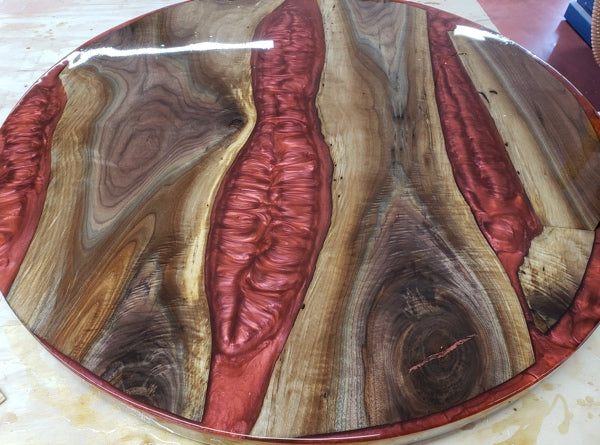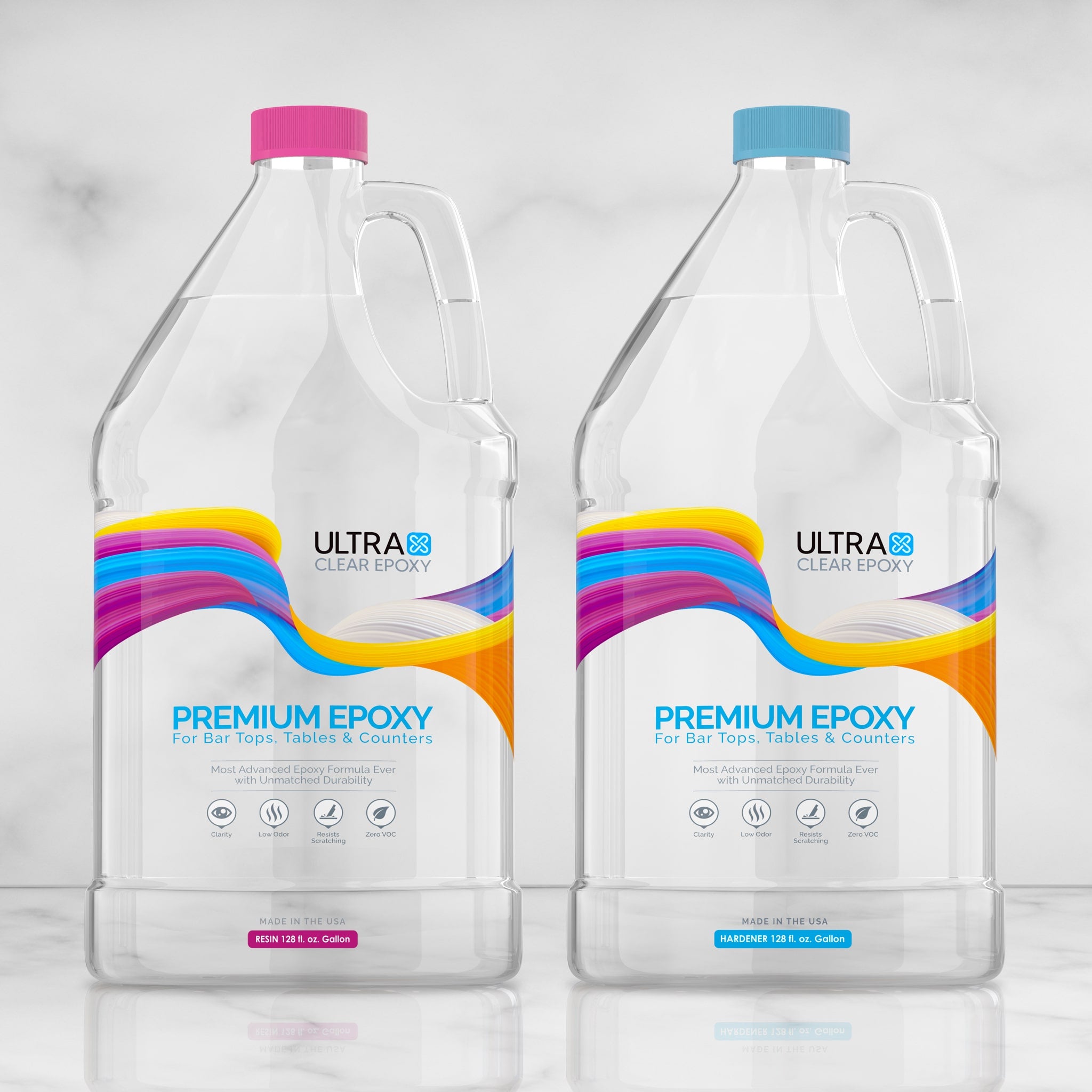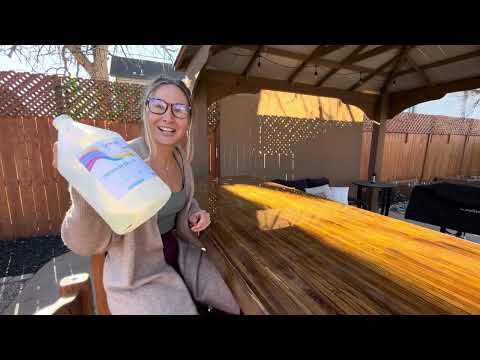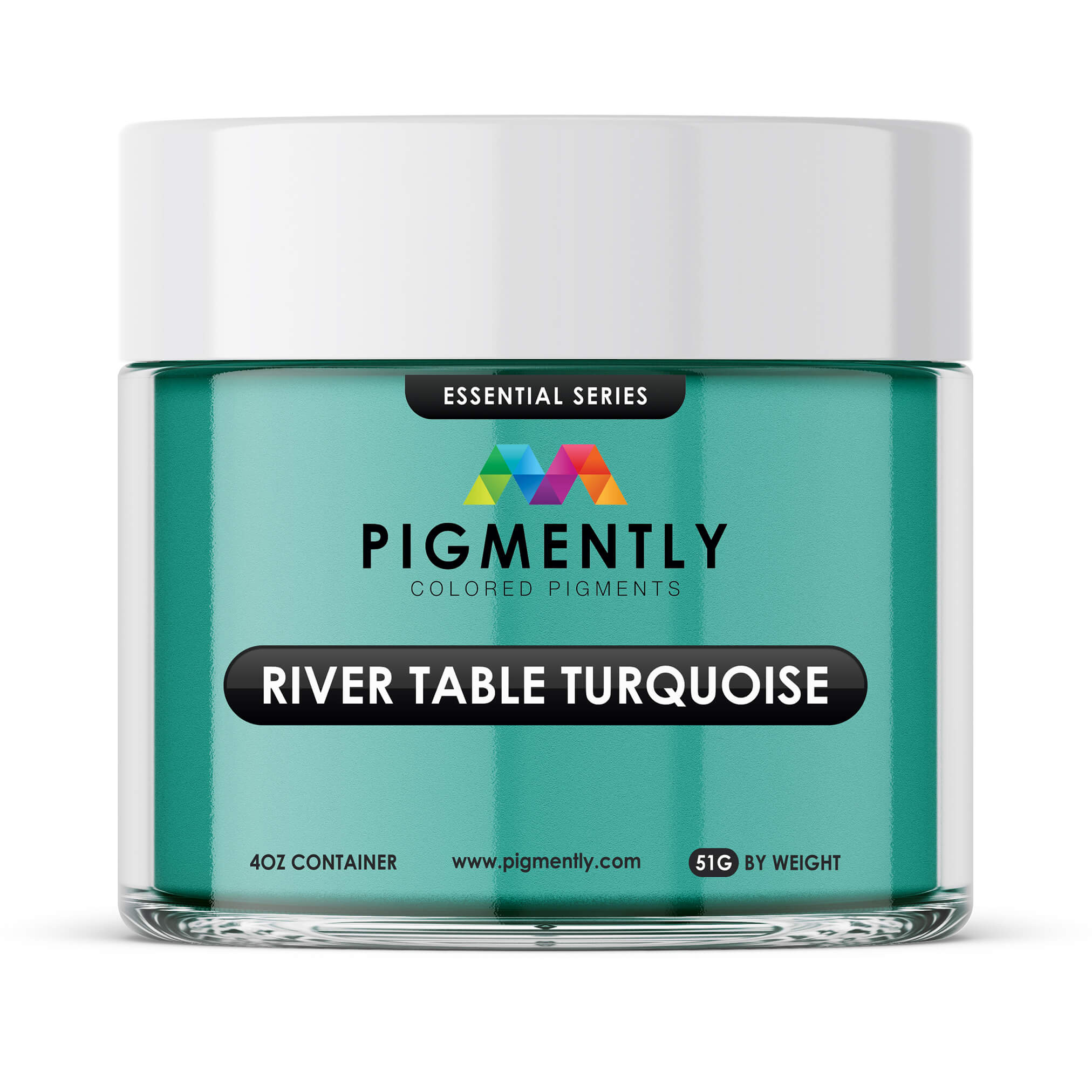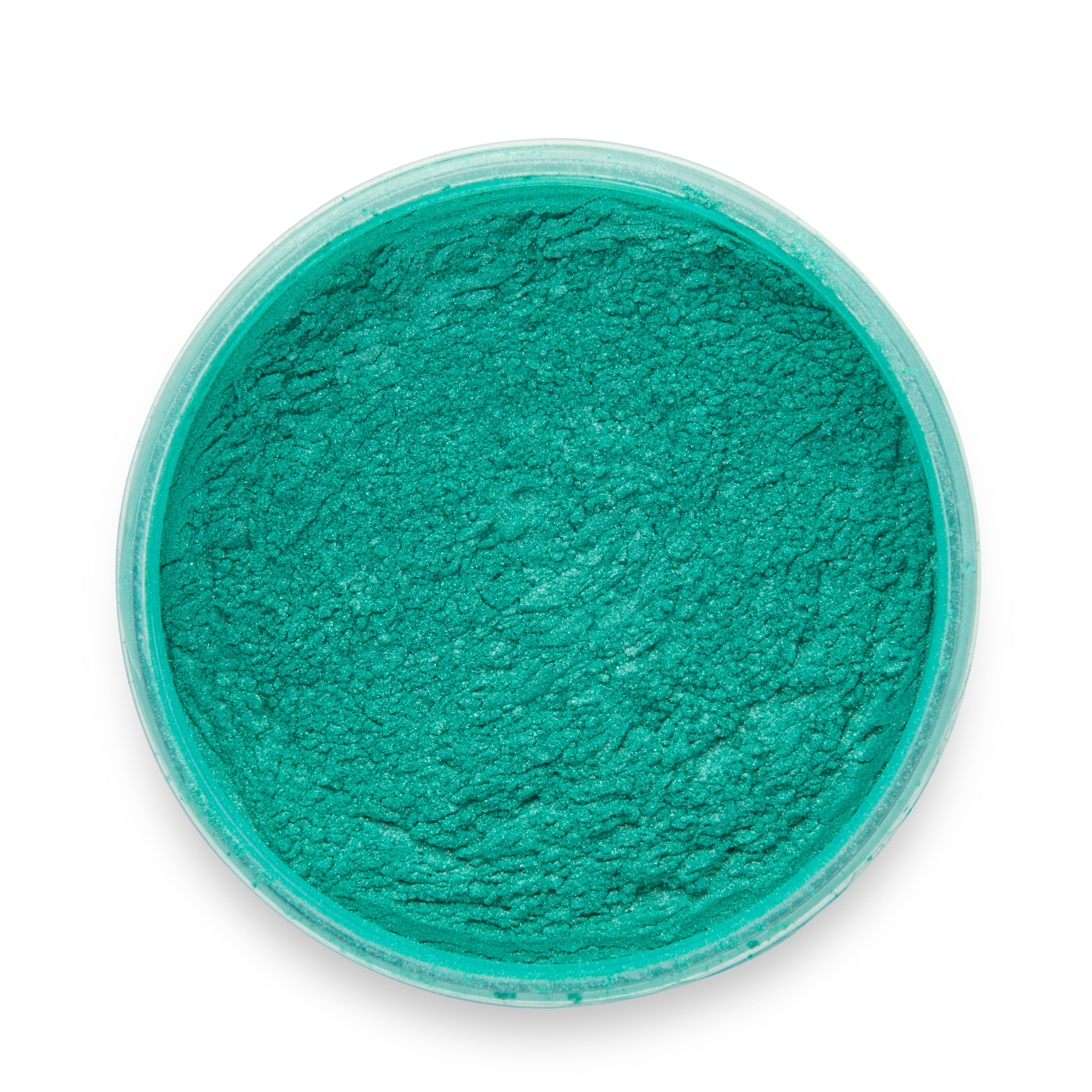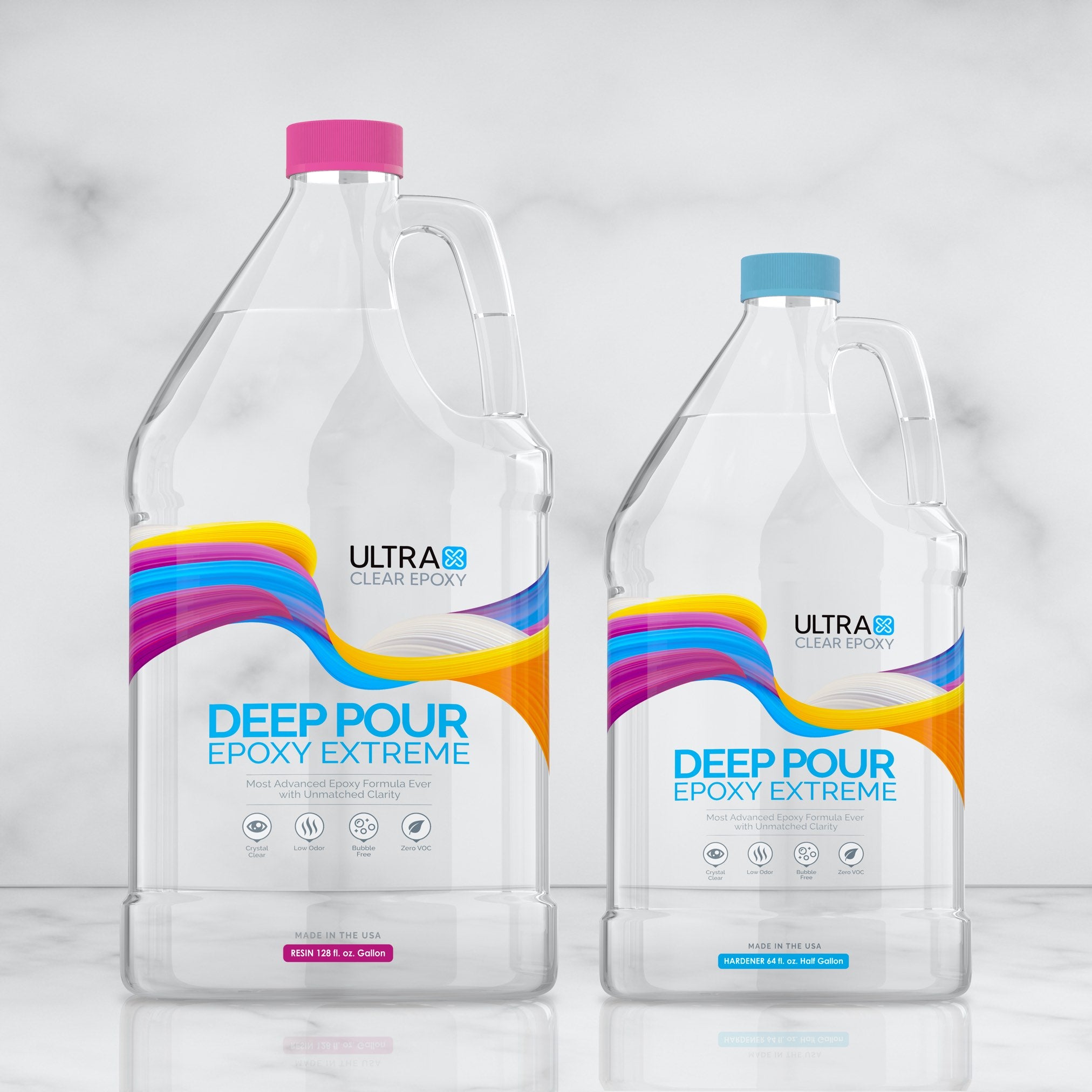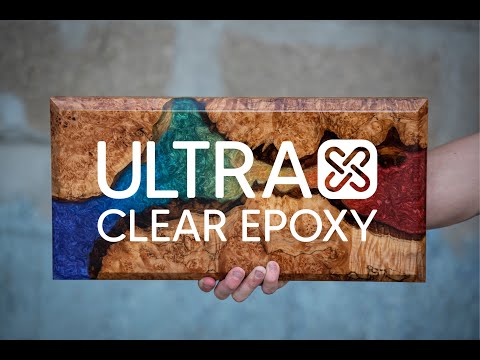Welcome to UltraClear Epoxy's deep pour resin guide for beginners.
Here we'll cover the fundamentals of what deep pour epoxy resin is used for. We'll then provide some examples of common epoxy projects that require it before finishing with a frequently asked questions section.
What is deep pour epoxy?
Deep pour epoxy is a type of casting resin, a category of liquid resins often used to create thick, protective finishes or large blocks of plastic in which objects (such as pennies) are typically embedded. It is also what we call the hardened polymer this resin becomes through curing, which we'll explain in the next section.
Because deep pour epoxy resin is a naturally transparent casting resin, anything encased within will be clearly visible in fine detail. It also provides a perfect waterproof seal, preventing moisture damage.
An additional feature of epoxy is that it's easy to clean once hardened.
These desirable traits are why many people choose it for preserving fragile items intended for permanent display, as well as for a variety of artistic endeavors.
How does deep pour epoxy resin transform from a casting resin into the hardened epoxy form?
Deep pour epoxy is stored as two separate components: resin and hardener.
When these components are mixed together in a ratio of two parts resin to one part hardener, they begin curing, which is a chemical reaction that generates some heat and slowly solidifies the combined mixture into an incredibly resilient plastic with a glasslike appearance.
The curing process typically takes three full days to be usable, though the final hardening will persist for about two weeks, at which point the epoxy will be at peak strength, able to withstand heavy impacts without damage.
How is deep pour epoxy different from traditional table top epoxy?
Traditional table top epoxy resin has a higher viscosity than deep pour epoxy; it is a clear resin that flows more like a thick syrup when poured and can self-level; it's also the strongest type of epoxy when cured.
Deep pour epoxy can be poured in thick layers of up to two inches each, while our table top epoxy is limited to thin layers of 1/8 of an inch in order to cure properly.
Table top epoxy is not intended for embedding objects (though it can be used that way). Instead, that is deep pour epoxy's purpose.
On the other hand, you can sometimes use deep pour epoxy and table top epoxy together as part of the same project to get the benefits of both.

What kinds of projects use deep pour epoxy?
Aside from its use for permanently embedding objects to display, deep pour epoxy is applied through a number of different ways.
Here are some examples:
-
River tables - These are tables that have a deep river-shaped space running through their center.
To make a river table, deep pour epoxy is poured into this space and allowed to cure, giving the illusion of a liquid river.
Special dyes or pigments can be mixed into the epoxy resin prior to pouring to infuse the river vein with color. The vividness and opaqueness of this color is determined by the amount of dye/pigment added. - Coasters, resin art, and similar items - Small items such as resin coasters can be made using silicone casting molds. Some people even choose to make their own custom molds to pour epoxy into.
- Resin jewelry - Deep pour epoxy can also be combined with colorful pigments and casting molds shaped like stones, gems, or other objects to craft custom jewelry.
Is deep pour epoxy difficult to work with?
Not at all! But it does require following a set of directions explicitly.
Epoxy can only cure under certain conditions, but these aren't generally hard to achieve.
First, you'll need to maintain a warm temperature range for the epoxy project environment for curing; you'll also want to make sure your working space is clean and contains all the tools and supplies you'll be using in convenient locations that won't inhibit your movement as you work through each step of the process.
Because the quality of different brands varies, make sure you use the instructions designed for whichever epoxy you have.
For example, our UltraClear Deep Pour Epoxy is always packaged with a detailed set of directions. We also have a digital version of them that you can read on our support website.

Be wary of substandard epoxy resin brands.
When applied properly, high-quality epoxy resins have a long lifespan with a clear, transparent appearance.
Unfortunately, many epoxy products are low quality, often bypassing regulatory standards by being imported from outside the U.S. These products will often break down early in their expected lifespan and cure with unavoidable imperfections or yellowing.
Our free ebook, The Ugly Truth About Epoxy Resin: What Companies Don't Want You to Know, teaches what to look for in an epoxy resin, and provides tips on avoiding deceitful marketing when shopping for epoxy resin.
Deep Pour Epoxy Frequently Asked Questions:
#1: Is deep pour epoxy "food safe"?
This depends on the brand you have.
For our UltraClear Deep Pour Epoxy: Once fully cured, the epoxy is inert and will be food safe.
Though we don't recommend preparing food on it directly—sharp knives can scratch the surface, and very high heat can cause it to soften—contact with the epoxy won't be any more of an issue than contact with most other plastics.
#2: Is the epoxy transparent (see-through)?
Yes, if nothing was added to the mixture, and you've cured it under the recommended conditions (listed in the epoxy's instructions), it will have a clear, glasslike finish.
#3: Is deep pour epoxy heat resistant?
Yes, to an extent—once fully cured, deep pour epoxy can comfortably withstand temperatures of up to 135°F
#4: Are small items made with deep pour epoxy dishwasher safe?
Unfortunately no. Because dishwashers generate intense heat, which they use to sterilize dishes and utensils, epoxy is not safe for dishwasher use.
Instead, you can hand wash resin items using warm water and ordinary dish soap. Avoid using vinegar, however, as acetic acid can weaken epoxy over a long period of time.
Additional Resources
Here are some additional resources you may find useful:
- How to wash away resin and epoxy on your hands and skin - Our guide to cleaning resin off of your skin. This is good to know before working with resin.
- Epoxy: Proper storage, shelf life, and preventing "yellowing" - Our guide to properly storing opened and unopened epoxy resin. Useful for when you have excess resin that you're not ready to use.
Have questions? Want advice? Let us help!
At UltraClear Epoxy, we want to make sure you get the assistance you need.
If you'd like help with planning your project, or if you have questions about epoxy or related topics, please reach out to us via phone or email.
During business hours, you can also text chat with one of our experts online by clicking the Help button on the bottom right of your screen.

